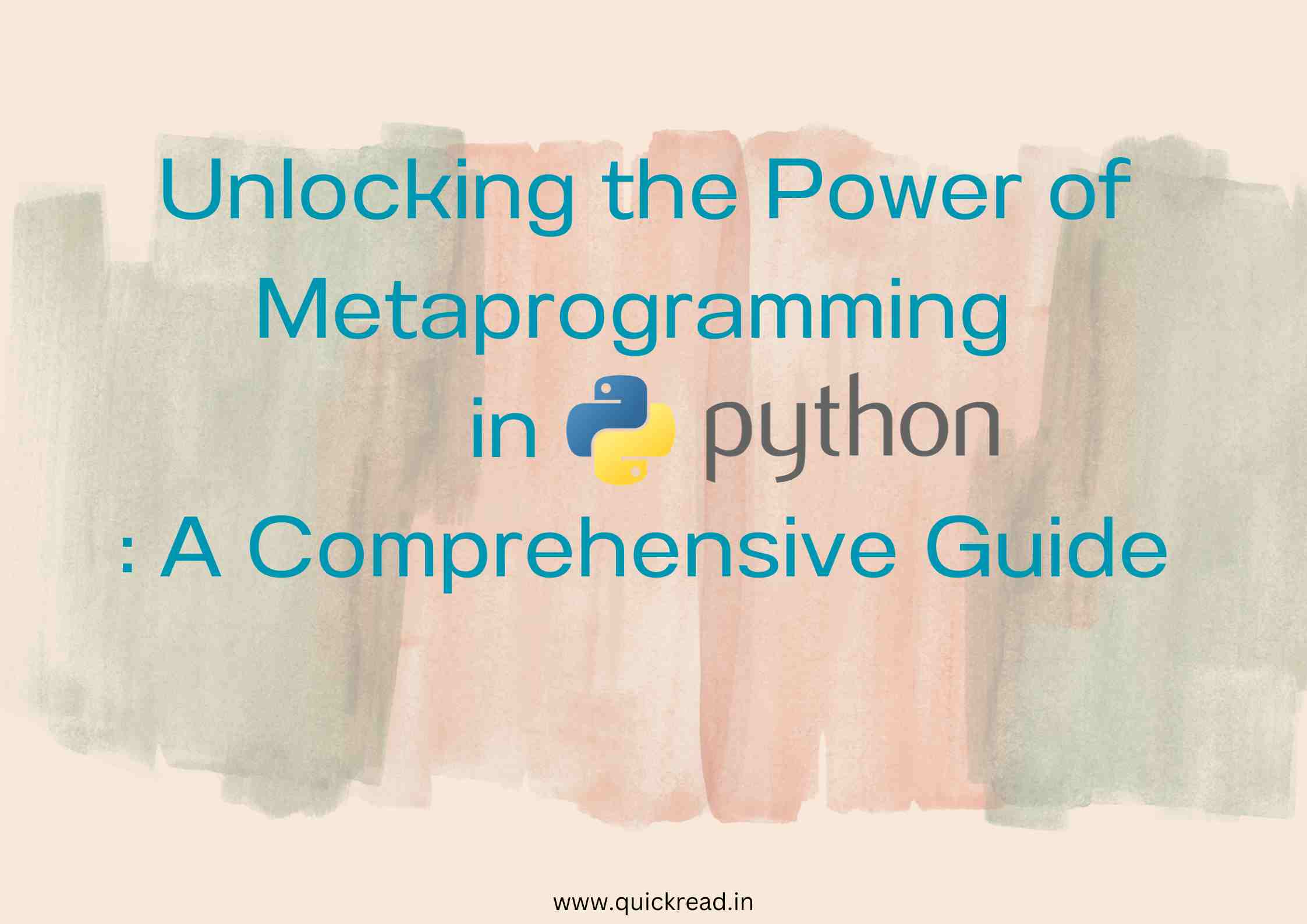Introduction
Metaprogramming is a powerful technique for extending Python’s capabilities. It allows programmers to write code that manipulates code – producing elegant, flexible programs. In this article, we’ll learn what metaprogramming is and why it’s useful in Python.
What is Metaprogramming in python?
Metaprogramming refers to writing programs that can treat other programs as input data. It involves writing code that generates, modifies or executes other code dynamically.
Some examples of metaprogramming:
- Metaclasses – Change how classes are defined
- Decorators – Modify functions and methods
- Code introspection – Analyze code artifacts dynamically
Metaprogramming in python provides ways to hook into Python’s internals and inject custom logic. Let’s look at common metaprogramming techniques in Python.
Key Concepts in Metaprogramming in python
| Concept | Description |
|---|---|
| Introspection | Inspecting code artifacts dynamically |
| Reflection | Modifying code and behavior at runtime |
| Metacharacters | Characters like @ and __ that have special meaning |
| Metaclass | Customize class creation and behavior |
| Decorator | Modify and wrap functions |
| Monkey patching | Dynamically replace parts of a program |
| Dynamic execution | Running arbitrary strings as code |
| Domain-specific language (DSL) | Mini languages built through metaprogramming |
Common Metaprogramming Tools
Python provides many modules and data structures that enable metaprogramming:
type– Create custom classes dynamicallygetattr()– Access attributes by name stringsetattr()– Set attributes dynamicallyeval()– Execute arbitrary string as codeexec()– Run dynamically created codedecorators– Wrap and modify functionsmetaclasses– Customize class creation__getattr__and__getattribute__– Intercept attribute access
These allow generating code at runtime and modifying behavior on the fly. Next, we’ll see examples.
Python Metaprogramming in Action
Here’s a decorator metaprogram that times function execution:
from time import perf_counter
def timer(fn):
def inner(*args, **kwargs):
start = perf_counter()
result = fn(*args, **kwargs)
end = perf_counter()
print(end - start)
return result
return inner
@timer
def long_fn(x):
...The decorator metaprogrammatically modifies long_fn to add timing.
Metaprogramming can also analyze live code. This prints all attribute names of an object:
obj = MyObject()
for name in dir(obj):
print(name)There are many creative applications of metaprogramming with Python’s reflective capabilities.
Why Use Metaprogramming?
Metaprogramming provides several advantages:
- Extend Python’s built-in syntax
- Implement domain-specific languages
- Dynamically construct classes
- Analyze running code to gain insights
- Build configurable, generic functions
- Create powerful development tools
Overall, metaprogramming allows cleaner, more expressive code when used judiciously.
Conclusion
Python’s metaprogramming facilities make it an incredibly flexible language. Metaprogramming allows layering logic on top of Python to adapt it for different needs. By mastering metaprogramming, developers gain fine-grained control over Python’s capabilities.
Frequently Asked Questions
Q: Is metaprogramming commonly used in Python programs?
A: Metaprogramming is more common in frameworks and libraries than applications. But decorators are a metaprogramming feature widely used by Python programmers.
Q: What are the downsides of heavy metaprogramming?
A: Overuse of metaprogramming can make code harder to understand and debug. It should be applied sparingly when the benefits outweigh the costs.
Q: Are there types of metaprogramming only possible in dynamic languages like Python?
A: Yes, dynamic features like runtime code generation and execution are very difficult in static languages. The dynamism provides more metaprogramming power.
Q: What are some examples of Python metaprogramming in popular frameworks?
A: Django, Flask, attrs, and SQLAlchemy all make extensive use of metaprogramming like class decorators and metaclasses. Metaprogramming enables their elegant APIs.
Q: Is metaprogramming used outside of Python?
A: Absolutely – languages like Lisp, Julia, Ruby, and Smalltalk have a long history with metaprogramming. The techniques apply broadly across languages.
Q: Are Python decorators metaprogramming?
Yes, Python decorators are a form of metaprogramming. Metaprogramming involves writing code that can modify, inspect, or generate other code dynamically at runtime. Decorators achieve this by modifying the behavior of functions or methods without changing their source code. They are a powerful metaprogramming feature in Python, often used for tasks like logging, access control, and more.


